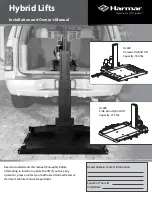
9
EN
Protecting your-
self and others
Noise emission
values
Anyone working with the device exposes themselves to numerous risks, e.g.
-
flying sparks and hot pieces of metal
-
Arc radiation, which can damage eyes and skin
-
Hazardous electromagnetic fields, which can endanger the lives of those
using cardiac pacemakers
-
Risk of electrocution from mains current and welding current
-
Greater noise pollution
-
Harmful welding fumes and gases
Suitable protective clothing must be worn when working with the device. The
protective clothing must have the following properties:
-
Flame-resistant
-
Insulating and dry
-
Covers the whole body, is undamaged and in good condition
-
Safety helmet
-
Trousers with no turn-ups
Protective clothing refers to a variety of different items. Operators should:
-
Protect eyes and face from UV rays, heat and sparks using a protective
visor and regulation filter
-
Wear regulation protective goggles with side protection behind the protec-
tive visor
-
Wear stout footwear that provides insulation even in wet conditions
-
Protect the hands with suitable gloves (electrically insulated and providing
protection against heat)
-
Wear ear protection to reduce the harmful effects of noise and to prevent
injury
Keep all persons, especially children, out of the working area while any devic-
es are in operation or welding is in progress. If, however, there are people in
the vicinity:
-
Make them aware of all the dangers (risk of dazzling by the arc, injury
from flying sparks, harmful welding fumes, noise, possible risks from
mains current and welding current, etc.)
-
Provide suitable protective equipment
-
Alternatively, erect suitable safety screens/curtains.
The device generates a maximum sound power level of <80 dB(A) (ref. 1pW)
when idling and in the cooling phase following operation at the maximum per-
missible operating point under maximum rated load conditions according to
EN 60974-1.
It is not possible to provide a workplace-related emission value during welding
(or cutting) as this is influenced by both the process and the environment. All
manner of different welding parameters come into play, including the welding
process (MIG/MAG, TIG welding), the type of power selected (DC or AC), the
power range, the type of weld metal, the resonance characteristics of the
workpiece, the workplace environment, etc.










































